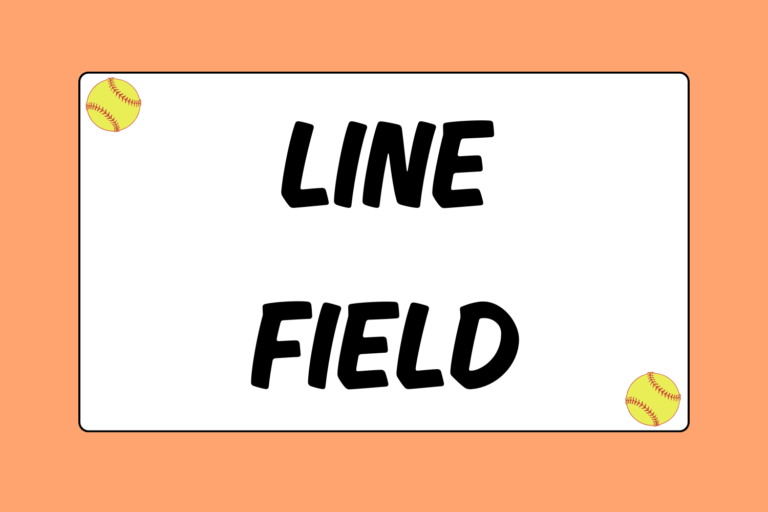The softball diamond is closely related to the baseball diamond, which is one of the oldest and most complex pieces of geometric symmetry in all of sports. Of course, not every field is constructed exactly the same. Fields all across the world differ in terms of distances of baselines, outfield fences, and the pitching rubber.
In the official rules of the International Softball Federation, the maximum outfield distance is stated to be 250 feet. Interestingly, this maximum is shared by both men and women. The variations in the distances are purely team-specific. While men’s fields tend to be deeper, youth leagues and collegiate teams often have smaller outfields. These dimensions can also vary depending on the league.
The following are all taken from the official International Softball Federation rules, but apply universally to nearly every full-sized field in the world.
Home Plate Area
- Home plate: The plate is a white rubber pentagon with one side measuring 17 inches in length from the base to the point. Two sides measure 8.5 inches in length, and two sides measure 12 inches in length. The two 12-inch sides form a point and face directly away from the pitcher’s rubber.
- Batter’s boxes: Both the right-hand and left-hand boxes measure 3 feet in width and 7 feet in length; each box is 6 inches away from home plate, positioned so the midpoints correspond to the midpoint of home plate.
- Catcher’s box: The catcher’s box measures 10 feet in length from the back of home plate, and 8.5 feet in width.
Pitcher’s Mound Area
- Pitcher’s rubber: The rubber is a white slab, measuring 24 inches by 6 inches. The pitching rubber should be level with the ground.
- Pitcher’s circle: The pitcher’s circle should be a measurement of an 8-feet radius around the pitcher’s rubber.
Bases and Baselines
- First base: First base is a called a safety base or double base. It is the length of two bases, 15 inches wide and 30 inches long. The safety base is positioned across the first base line so that half of the base lies in fair territory and the other half lies in foul territory. The half that is in fair territory is painted white and the half that is in the foul territory is painted orange.
- Second and third base: Second and third base are white, measure 15 square inches, and are 3 to 5 inches thick. Third base is positioned entirely in fair territory. Second base lines up squarely with first base and third base, so that the four bases form a perfect 60-foot square.
- Distance from home plate to first base: 60 feet.
- Distance from first base to second base: 60 feet.
- Distance from second base to third base: 60 feet.
- Distance from third base to home plate: 60 feet.
- Width of each baseline: 3 feet.
Other Dimensions
- Infield size: From the third-base foul line to the first-base foul line, the back edge of the infield dirt is 60 feet from the pitcher’s rubber at all points (a radius, if you will).
- Coach’s box: The coach’s box is 15 feet in length and three feet in width; it’s positioned so the back of the box lines up evenly with the line from second base to third base, and from second base to first base; each box is eight feet from the foul lines.
- Distance from home plate to the pitcher’s mound: 43 feet.
- Distance from first base to third base (across the diamond): 84 feet, 10¼ inches.
- Distance from home plate to second base (across the diamond): 84 feet, 10¼ inches.
- Distance from home plate to the backstop (not mandatory): 25 to 30 feet.
Softballs and Bats
- The ball: As per the official rules, the softball “shall have a center core made of materials approved by the ISF Equipment Standards Commission. It may be wound with yarn, covered with latex or rubber cement, and have a cover of tanned horsehide or cowhide, synthetic material, or a material approved by the ISF Equipment Standards Commission.” The ball must weigh between 6¼ and 7 ounces, and its circumference must be between 11 and 12⅛ inches.
- The bat: As stated in the rules, the bat “shall be a smooth, round stick not more than 2¼ inches in diameter at the thickest part, no more than 34 inches in length, or weigh more than 38 ounces.” These rules have been amended at many levels of softball to allow the use of metal, graphite, carbon, fiberglass, or other materials approved by the ISF Equipment Standards Commission.
Variations on Field Dimensions
It must be noted that many leagues and organizations throughout the world use variations of the above dimensions and standards for different levels of softball.
Distances from home plate to the pitcher’s mound
- Women’s fastpitch (HS and college): 43 feet
- Women’s fastpitch (18 and under): 40 feet
- Women’s fastpitch (10 and under): 35 feet
- Men’s fastpitch (18 and under): 46 feet
- Men’s fastpitch (12 and under): 40 feet
- Men’s fastpitch (10 and under): 35 fee
- Men’s, women’s, and co-ed slow pitch: 50 feet
Distances for base paths and outfield fences tend to vary, as well. Women’s fastpitch fences are set at an average of 220 feet from home plate, and men’s fastpitch extends to 250 feet. Slowpitch fences are typically between 275 feet and 300 feet in distance depending on the type of league and age group.
Most players begin playing permanently on the official full-size field around the time they start high school. However, in many instances, fields do not subscribe exactly to the above dimensions (usually due to lack of space or resources). Infield dimensions vary depending on location and governing body, but all are designed to retain or closely mimic the proportions of the official dimensions.





